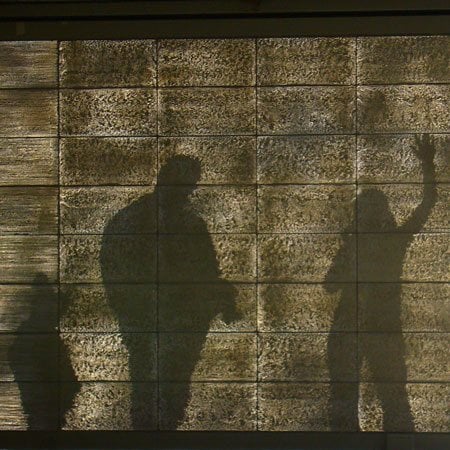
Litracon light-transmitting concrete
Our story last month about the launch of a product called TranslucentConcrete provoked a lot of comments, with many people pointing out that a similar product called Litracon was patented in 2002.
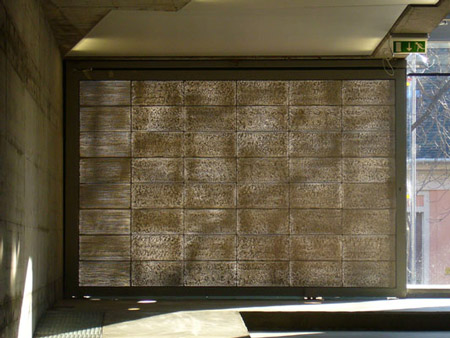
Now Litracon inventor Hungarian architect Áron Losonczi has contacted us, requesting the opportunity to set the record straight.

Below is an open letter from Losonczi, plus photos of the Cella Septichora Visitors Centre in Pécs, Hungary, which has a door made of Litracon blocks set in a steel frame. The centre, designed by Bachmann & Bachmann Architects, opened last summer - a full description follows Losonczi's letter:
--
Dear All,
The inventor of Litracon™ - Light-Transmitting Concrete is Hungarian architect Áron Losonczi. He invented this material in 2001. He filed his first patent in 2002 and it is now being granted internationally. Litracon is already patent protected Germany where the showcased “invention” is being advertised. ‘Litracon’ is a registered communitiy trademark.
We would like to inform you until now we have not give a license to anyone to produce or sell this material.
The only authorized manufacturer and distributor of Litracon™ products is:
Litracon Bt.
H-6640 Csongrád
Tanya 832
Hungary
tel.: +36 30 255 1648
[email protected]
www.litracon.hu
--

Cella Septichora Visitors Centre
Location: Káptalan utca, Pécs, Hungary
Client: Pécs/Sopianæ Örökség Közhasznú Társaság, Pécs, Hungary
Architect: Bachmann & Bachmann Architects (H)
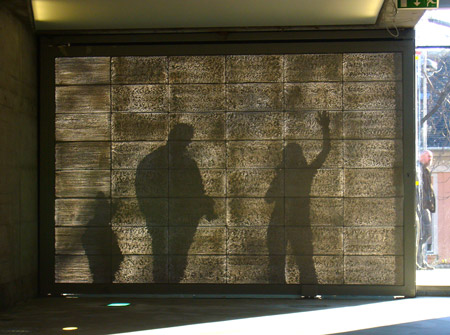
Description of the ruins: World Heritage in Pécs
The area of Pécs has been inhabited continuously for about 2000 years, ever since the Roman times. The peoples formerly living here either side –by-side or one after the other left behind an impressing amount of archaeological finds. The ruins of the late Roman Christian Necropolis, located in the north-west of the inner city, in the vicinity of the Cathedral, are of particular interest considering they have survived several centuries of our stormy history.
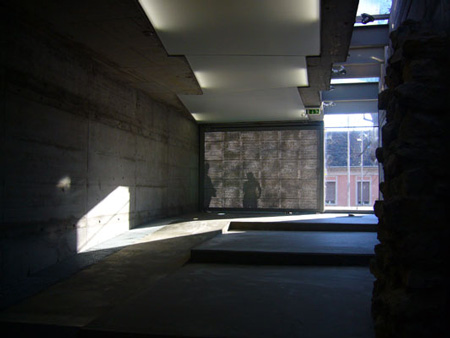
The archaeological exploration of Sopianae (as Pécs was called in the Roman times) and its Necropolis has been going on for several hundred years already. The finds helped outline the town of Sopianae and the necropolis to the north of it, on the slopes of the Mecsek Hills.
The community of Sopianae built a significant number of burial structures (chapels, burial chambers, built tombs) in the 4th century. These buildings are of outstanding value both as to their architecture and artistic features. Since the year 2000 they have been on the UNESCO World Heritage list.
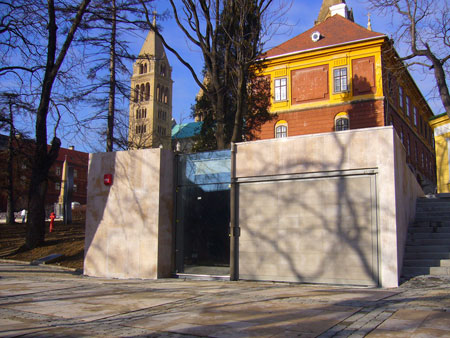
Cella Septichora Visitor Centre
Gyula Gosztonyi, architect-archaeologist initiated the exploration of the Cella Septichora early Christian burial structure as early as the beginning of the 20th century. It was also his idea that the burial chambers should be connected under the ground and opened to the public.
The grant of 1.5 billion HUF obtained from the Operative Programme of Regional Development for the implementation of the project ‘World Heritage in Pécs, Enhancement of its Touristic Appeal’ between 2004 and 2006, enabled us to realize that dream. As a result, visitors can admire the Wine Pitcher Burial Chamber, the Peter and Paul Burial Chamber, the Octagonal Burial Chamber, and Burial Chambers Nos. 3, 4, 19 and 20, opened to the public early 2007.

Sites open to visitors
Cella Septichora Visitor Centre
- Cella Septichora: This late Roman building with seven foils, built in the 4th century has a ground-plan which makes it unique in the area of the river Danube. In a depth of 4-6 m, on the former ground level visitors can see the walls rising as high as 2 m at places.
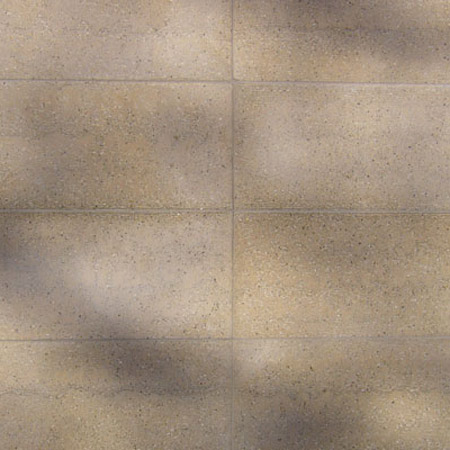
The door:
The 2 tons heavy Litracon door serves as the main entrance of the Visitors Centre. It was made out of 48pcs of 10cm thick blocks with post-tensioned rebars inbetween the blocks. The blocks are in steel frame to be able to move the structure. By day, on can see the shadows of the pedestrians and the surrounding trees from inside. By night, the door is illuminated from inside.
Size: W361cm / H244cm / Th10cm, in steel frame